
A collection of 101 research writing idea prompts.
- Subject:
- English Language Arts
- Material Type:
- Activity/Lab
- Provider:
- E Reading Worksheets
- Author:
- E Reading Worksheets
- Date Added:
- 02/26/2019

A collection of 101 research writing idea prompts.

Students learn useful, reliable ways to locate materials for personal, academic or professional research projects on NYTimes.com.
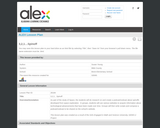
Students work collaboratively to research and record information about different spinoffs of space exploration. Using the information they find, students then write a script to be produced into a podcast or vodcast.

This resource accompanies our Rethink 8th Grade ELA course. It includes ideas for use, ways to support exceptional children, ways to extend learning, digital resources and tools, tips for supporting English Language Learners and students with visual and hearing impairments. There are also ideas for offline learning.

This parent guide supports parents in helping their child at home with the 8th grade ELA content.
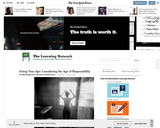
Students participate in a fishbowl discussion about various legal situations related to the "age of responsibility" and contribute their ideas and arguments on the matter to a Learning Network Student Opinion blog post. This resource from the New York Times discusses what standard(s) society should use to determine when a youth should be treated as an adult.

Students will research an African American person based on set questions. The students will present their person in an interview format - Guess Who.

Students will research an African American person based on set questions. The students will present their person in a digital presentation format.
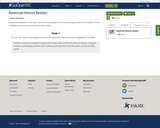
Research the answers to the clues. Then use those answers to fill in the starting numbers in the sudoku. Finally complete the puzzle as you would any other sudoku.

In this lesson, students will compare/contrast the information in their textbook about Andrew Jackson to political cartoons of the era. Students will identify symbols, allusions and stereotypes used in these cartoons and infer the intended message and tone of the Jackson era cartoons. Students will also identify any biases in the cartoons and check for historical accuracy, and then formulate their own opinion about the Jackson Administration. As a culminating activity, students will write an opinion essay that articulates their personal stance on Andrew Jackson’s character, using proper writing conventions.
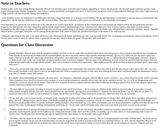
This resource is a collection of discussion questions and to supplement Animal, Vegetable, Miracle by Barbara Kingsolver.
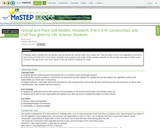
In this activity, students will work in collaborative groups to create 9M x 9M models of plant and animal cells. Class population can be split into 2 or 4 groups, with half the students constructing animal cells and the other half constructing plant cells. Students must organize and assign duties, provide materials for this activity, and write a written report. They will also give "Cell Tours" to other students and/or classroom guests.
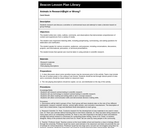
Students will research and discuss a sensitive or controversial issue and attempt to make a decision based on group findings.
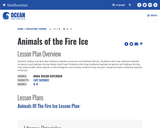
Students learn about methane hydrate ice worms and hydrate shrimp, including how they obtain their food and interact with other species in deep sea ecosystems. Students will work in collaborative groups to research these organisms to develop hypotheses about the relationship between methane hydrates, ice worms, and hydrate shrimp and present their hypotheses to the class. In an extension activity, students will construct models of methane hydrate molecules.
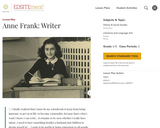
This lesson concentrates on Anne Frank as a writer. After a look at Anne Frank the adolescent, and a consideration of how the experiences of growing up shaped her composition of the Diary, students explore some of the writing techniques Anne invented for herself and practice those techniques with material drawn from their own lives.

In this lesson, students will discover a policy within their school or district that is important to them and that they'd like to change. They will conduct an investigation of the policy in question and write a letter with their claim, results, and recommendation to the appropriate audience.

This resource is a collection of discussion questions to supplement The Art of Racing in the Rain by Garth Stein.

In this lesson, students read Shakespeare's "Julius Caesar", then research the assassination of another historical figure.

Students use Shakespeare's Secret, a featured title on the Teachers' Choices Booklist (International Reading Association, 2006), as a springboard to exploration of the controversy regarding the authorship Shakespeare's works. The novel makes liberal use of the historical details surrounding William Shakespeare's life, and exposes students to the possibility raised by some theorists that Edward de Vere, Earl of Oxford, was the true author of the works that have long been attributed to the Bard. Students explore the historical references in the novel and generate questions for further research. As they research these questions on suggested websites, they organize their findings with the help of the ReadWriteThink Notetaker. Then they work in small groups to create and present short dramatic skits that creatively connect the novel with the historical facts.

Students conduct research about how studying ocean currents is helpful to people in specific jobs or professions. Then they present their findings to the class.